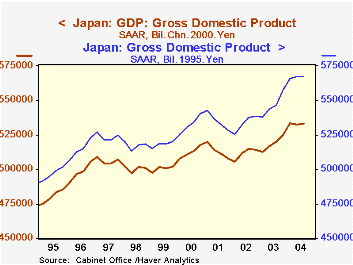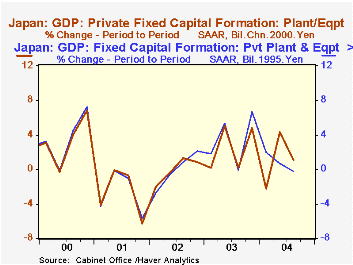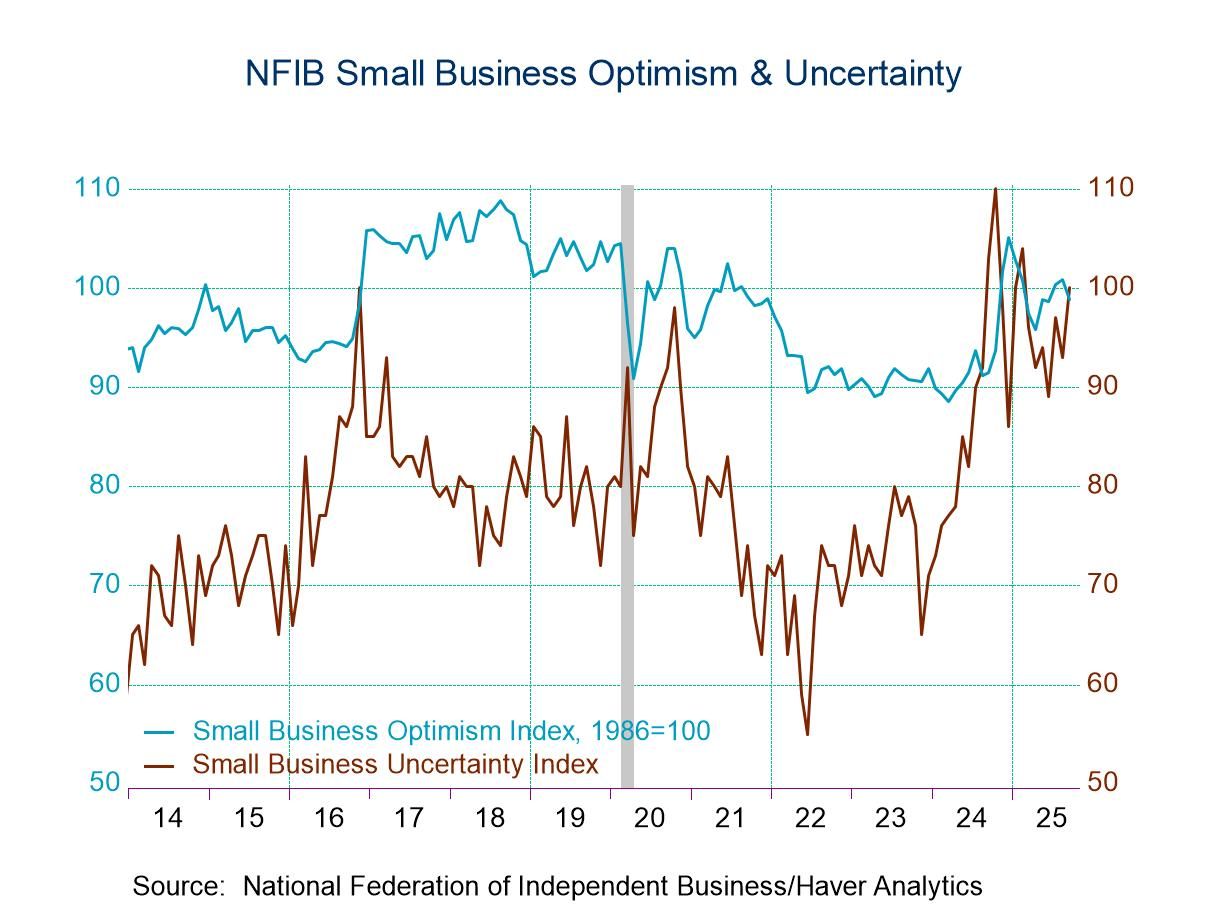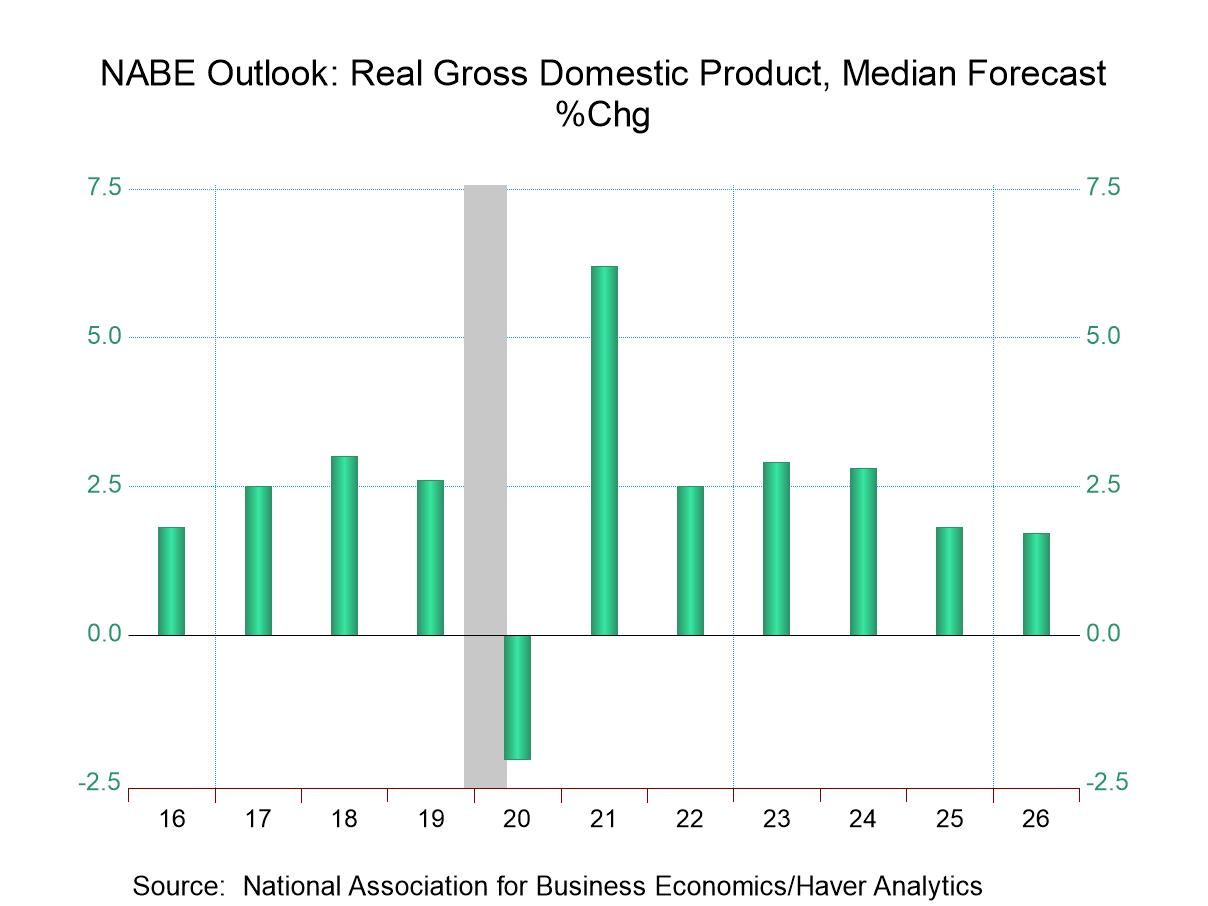 Global| Dec 08 2004
Global| Dec 08 2004Revisions Bring Modestly Lower Japanese GDP Growth; Data Now Chain-Linked, Rebased to 2000
Summary
Revised data for Japan's Q3 GDP were reported today by the Cabinet Office. This is the usual "second preliminary" report, but it also included the previously announced shift to chain-linking and the rebasing from 1995 to 2000. Now, [...]

Revised data for Japan's Q3 GDP were reported today by the Cabinet Office. This is the usual "second preliminary" report, but it also included the previously announced shift to chain-linking and the rebasing from 1995 to 2000. Now, technically as in other countries that use chain-weighting, there is no "base year". 2000 is known as the "reference year" and only means that is the period when price indexes are set equal to 100, and therefore nominal and "real" chain-weighted items are equal.
Real GDP rose 0.06% in Q3, minimally less than the original Q3 compilation showing an 0.08% increase. An interim calculation using chain-weighting, which was published on November 18, showed a decrease of 0.03%. Today's press reports highlight the comparison with the original data, and so conclude that growth is slower. However, in the new data released today, more current input data actually lifted the quarter's overall performance by a tiny amount from the Interim figure. Longer-run comparisons show that the technical shift in weighting procedures yielded slower growth, but this was to be expected. It isn't that the economy is actually weaker than thought before, but that there is now a more accurate numerical representation.
For Q3, more distinguishable shifts occurred in individual GDP components. As seen in the table below, consumer spending is now seen as weaker than before; effects of chain-weighting eroded some of the growth and the routine quarterly revision cut further into it. In contrast, plant and equipment investment was stronger. As we noted in our commentary on the shift to chain-linking in mid-November, the chaining procedure did subtract some investment growth in recent periods. However, new input data brought significant gains to the latest two quarters while diminishing the prior two periods. Thus, although growth over the last year has been the same as in the Interim data, the shift in the quarterly distribution leaves more forward momentum. With other varied economic indicators looking less healthy, this uptrend in Japanese business investment gives some encouragement that business conditions there are not uniformly deteriorating.
As in November, these data were again updated in "real time" by our Asian shift staff. Clients in the Far East and in Europe then had access to the information early in their own workdays. Updates for many series in China, Korea and Hong Kong, among others, are coming now in what for New Yorkers is the evening or middle of the night.
| % Changes | 3 Qtr 2004 | 2 Qtr 2004 | Year Ago | 2003 | 2002 | 2001 |
|---|---|---|---|---|---|---|
| GDP: Chain Weighted, 2000 Yen | 0.1 | -0.1 | 2.6 | 1.3 | -0.3 | 0.2 |
| Chain Weighted, 1995 Yen | -0.0 | 0.0 | 2.7 | 1.3 | -0.4 | 0.2 |
| Fixed Weighted, 1995 Prices | 0.1 | 0.3 | 3.8 | 2.5 | -0.2 | 0.6 |
| Household Consumption: Chain Weighted, 2000 Yen | 0.2 | 0.3 | 2.1 | 0.2 | 0.5 | 1.0 |
| Chain Weighted, 1995 Yen | 0.6 | 0.6 | 3.0 | 0.2 | 0.7 | 1.1 |
| Fixed Weighted, 1995 Prices | 0.9 | 0.8 | 4.0 | 0.8 | 1.0 | 2.2 |
| Private Investment, Plant & Equipment: Chain Weighted, 2000 Yen | 1.1 | 4.3 | 7.4 | 6.2 | -6.7 | 0.8 |
| Chain Weighted, 1995 Yen | -0.8 | 0.2 | 7.4 | 6.8 | -6.3 | 0.7 |
| Fixed Weighted, 1995 Prices | -0.2 | 0.6 | 9.2 | 9.6 | -6.9 | 1.7 |
Carol Stone, CBE
AuthorMore in Author Profile »Carol Stone, CBE came to Haver Analytics in 2003 following more than 35 years as a financial market economist at major Wall Street financial institutions, most especially Merrill Lynch and Nomura Securities. She had broad experience in analysis and forecasting of flow-of-funds accounts, the federal budget and Federal Reserve operations. At Nomura Securities, among other duties, she developed various indicator forecasting tools and edited a daily global publication produced in London and New York for readers in Tokyo. At Haver Analytics, Carol was a member of the Research Department, aiding database managers with research and documentation efforts, as well as posting commentary on select economic reports. In addition, she conducted Ways-of-the-World, a blog on economic issues for an Episcopal-Church-affiliated website, The Geranium Farm. During her career, Carol served as an officer of the Money Marketeers and the Downtown Economists Club. She had a PhD from NYU's Stern School of Business. She lived in Brooklyn, New York, and had a weekend home on Long Island.





